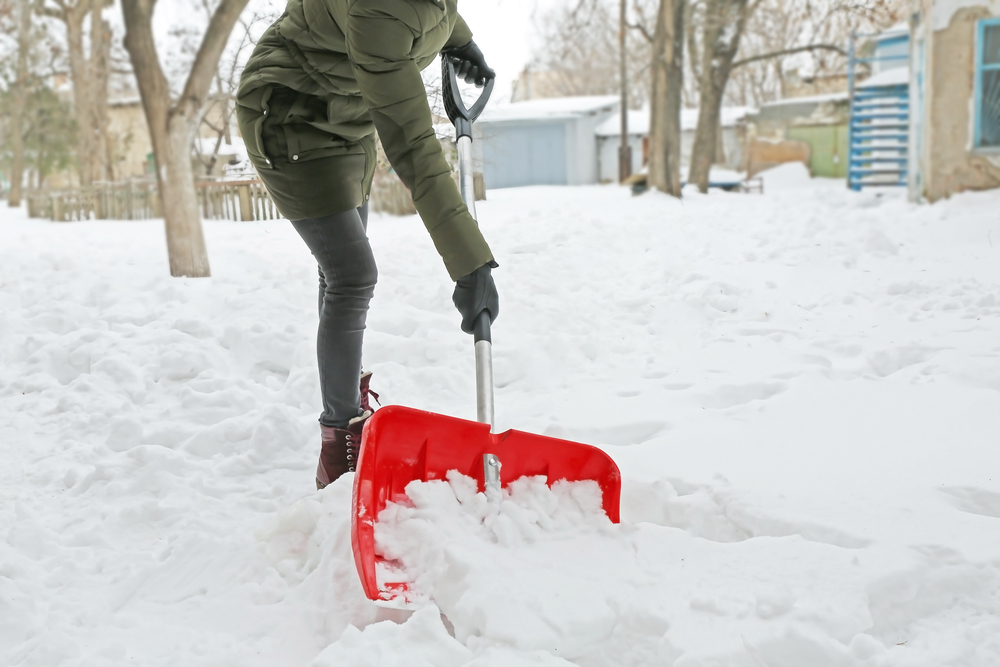Snow Shoveling 101: Avoiding Orthopaedic Injuries This Winter

By Dr. M. Brian Polsky
I see it in my office every winter – after a big snow, there is a pretty noticeable uptick in patients who report pain in their shoulders, hips, knees and lower back as a result of clearing their driveways and sidewalks. Snow shoveling is a significant athletic event, which can – and does – cause injuries ranging from minor muscle soreness all the way to tendon or ligament injuries requiring surgery. Even during more minor snowfalls, you can put yourself at risk of injury.
Don’t laugh it off – snow shoveling injuries are real! Let’s take a look at some of the most common injuries you can sustain and the typical treatments they require:
Muscle Strains
You can strain your muscles from overexerting yourself in any typical exercise routine, and we often see this when people overdo the shoveling, too. You’ll feel an ache, soreness or tightness in your muscles. This can be treated at home – so long as the pain improves – with activity modification, anti-inflammatories, stretching and time.
Sprains
This is a more painful injury that is often accompanied by stiffness, swelling and difficulty bearing weight if the injury is to the knee, hip or ankle. While this injury often can be treated at home similarly to the strain, the pain does tend to bring patients into the office. While all cases and injuries are different, I will sometimes recommend a possible course of physical therapy to help with the rehabilitation depending on the severity of the sprain.
Tendon and Ligament Injuries
These are more significant injuries that patients often associate with a specific event. For example, they may remember twisting or falling while shoveling, causing a sharp pain in the injured joint. Patients will have trouble putting weight on the joint, and can’t move the joint without pain. We’ll typically need to do an MRI to evaluate the injury, and depending on the severity, we’ll either treat conservatively or with surgery.
There are many precautions you can take to avoid injury while shoveling snow, but first it’s important to know why these injuries occur. First and foremost, most people don’t see shoveling as a big task, but the act of shoveling snow is a significant athletic endeavor that requires the use of many big muscles throughout the body. It’s a high intensity workout, and many people just dive right in without preparing. Depending on the size of your driveway, you could be shoveling for an hour or more – and not everyone is fit enough to shovel for an hour straight.
My advice to patients is simple: treat shoveling snow like an athletic event. Make sure to stretch the muscles in your legs, back and arms before you start. You should also limit the time spent shoveling. I usually recommend that patients shovel in 10-15 minute shifts followed by a break. On top of the orthopaedic injuries you can sustain, there is also the risk of a heart attack during snow shoveling, so taking breaks is critical. Be sure to hydrate during breaks, too.
You should also be sure to have the correct equipment. I’ve seen patients who described using a basic dirt shovel, which can increase your risk of injury because of its weight. Use a good snow shovel – it makes a huge difference. There are newer ergonomic shovels with two handles that are better and safer for shoveling snow. Having the right equipment goes beyond a good shovel, though. You need to dress appropriately for the cold to keep your muscles warm. I often compare muscles to rubber bands. If they get too cold, they tighten up and are at a higher risk of injury.
Finally, take less snow with every pitch. It may make the process last a little longer, but your muscles will thank you if you take half loads versus a full shovel. And here’s a trick – if you coat your shovel with cooking spray, the snow will slide right off, reducing the amount of effort it takes to toss the snow.
We always see patients with these injuries following a snowfall, and it’s something I talk to my patients about pretty often. If you can – especially if you are older or not in the best physical condition – try to pay for someone to clear your driveway for you. If not, take precaution to make sure you don’t hurt yourself. These injuries are often preventable.
Brian Polsky, M.D., is a board certified and fellowship trained orthopaedic surgeon specializing in orthopaedic surgery, minimally invasive arthroscopic surgery, sports medicine and joint replacement at the Orthopaedic Associates of Central Maryland care center. Dr. Polsky also serves as a Clinical Instructor in the Department of Orthopaedics at the University of Maryland and regularly publishes new research in peer-reviewed medical journals.

